The longest climb you’re likely to come across in Victoria is the gruelling 30km ascent of Mt. Hotham. But when you’re climbing Alto de Letras in Colombia, 30km of climbing is barely a warm-up. In this guest post, Alejandro Jiménez recalls his encounter with the epic Alto de Letras. This post first appeared, in Spanish, on Alejandro’s great blog, GOandRIDE.co.
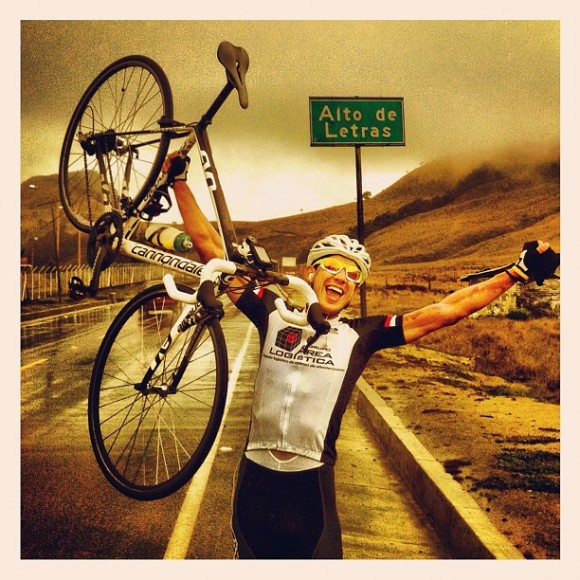
It’s a ride I’ve always wanted to do and one that I had to wait a long time for. But a few weekends ago, I finally did it: I climbed Alto de Letras. Before I get to that, here’s some information about the climb itself.
Alto de Letras is the hardest cycling climb in Colombia. In fact, many cyclists consider it to be among the most challenging climbs in the world. It’s a climb that’s included in the Vuelta a Colombia (Tour of Colombia) and the Clásico RCN (another Colombian stage race).
The climb starts in the small town of Mariquita which has an altitude of 468 metres above sea-level. By the time you reach the top at the Páramo de Letras pass, you’re at an altitude of 3,663 metres … and you’ve been climbing for 80km.
Those 80km of climbing are at an average gradient of roughly 4%, providing an elevation gain of just under 3,800 vertical metres. That said, the gradient is between 6-9% for most of the ride and there are also many 10%+ ramps to contend with.
Luckily, there are several short downhills (1-3km long) every 15 to 20km which allow you to refocus and take a deep breath … if that’s even possible at that altitude.
The temperature at the start of the climb could be in the mid-20s to mid-30s, depending on the weather conditions and time of day. But at the top temperatures can be as low as 5-10°C; even lower if you get wet (which I did during my ascent).
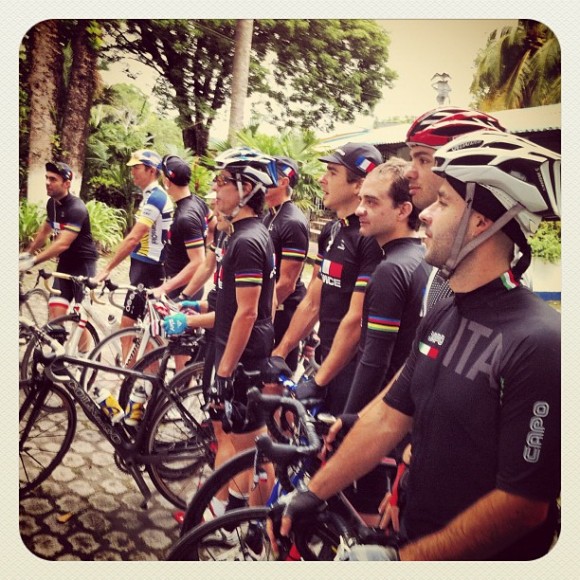
One of the best parts about my attempt at Alto de Letras was spending time with my mates in the car. It’s a roughly-six-hour drive from Medellin – the second-largest city in Colombia and my hometown – to Mariquita and spending time with those guys on the long drive made the trip even more memorable.
After the long drive we arrived at the Hotel Las Acacias in the town of Mariquita. Of the 21 riders attempting the climb, we were the first group to arrive and so we decided to look for the most comfortable and cool room.
Sadly, it was impossible to find both conditions in the one room, so we picked a room that was probably too small for three people plus bicycles but it was good enough for what we needed. In the end we only paid AUD$30 per person per night including breakfast.
After unpacking, we gave the bikes a quick once-over with my secret formula: baby wipes, a great suggestion from CyclingTips!
For dinner at the hotel we ordered a special dish that was not included on the menu. We simply asked for pasta without any fat, butter or oil or any sauce. To that the chefs added shredded chicken, and we also had a salad, bread with jam and orange juice.
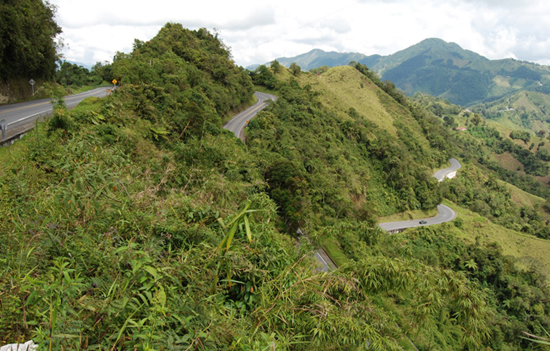
At 5:30am our breakfast was served and included: pasta (same as dinner), scrambled eggs, bread, jam, hot chocolate and pineapple juice. After checking tyre pressure (120PSI — the pavement is good for most of the climb) we were ready to start the ride at 6:30am as planned.
As we walked outside we could see we were in for a cloudy, humid day. The temperature was not too high — about 22°C — but rain was expected throughout.
I didn’t take arm-warmers, a vest or a jacket with me and for the most part I didn’t regret the decision. Then again, a rain jacket for the last 15km, in the rain, would have been good! Apart from my iPhone (for listening to music), my jersey was full of food: biscuits, small cakes, lolleys, protein bars, energy bars and gels.
We started at a relatively slow pace and I was feeling really comfortable. Our goal was to enjoy the ride so we kept the group in one piece, talking and joking through the first two hours.
Some rocks and mud on the road took their toll on the group and two riders found themselves with a flat tyre. This broke the group up with a few people stopping to wait while myself and another rider (Carlos Estrada) continued on.
From that point on — roughly 27km into the ride — it was just Carlos and I riding together. We had found a very good, steady pace and my heart-rate hovered comfortably between 140 and 160BPM … except when we were climbing the many steep ramps of 10%+ gradient.
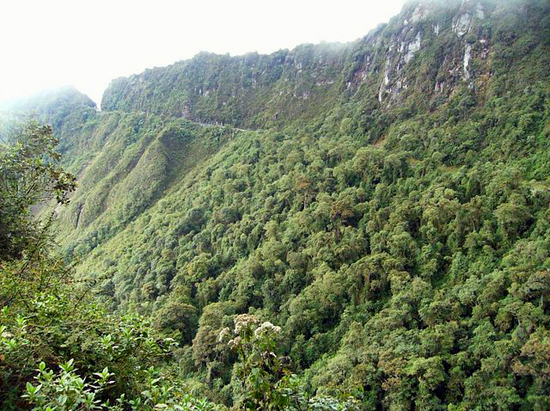
It started raining properly after about 65km but by that point we were already pretty wet from water flicking up off the road and a few showery patches we’d ridden through. With the rain coming down and the temperature much lower than when we started the ride, it was just like a rainy winter ride in Melbourne!
Eventually, after 4 hours 48 minutes of climbing we reached the top of the epic climb. I’m told that anything under 5 hours isn’t a bad time, anything under 4 hours 30 minutes is great and if you go under 4 hours you might have the makings of a pro cyclist.
Oh, and for any of you that are wondering, the record time for the 80km climb is apparently 2 hours 52 minutes, recorded by Santiago Botero on his way to winning the Vuelta a Colombia in 2007.
The arrival at the top was both exciting and hugely satisfying. But after stopping my Garmin to check time and distance and taking the obligatory photo (see the top of this post) I ran off to get warm and dry. Carlos and I borrowed towels from the restaurant at the top and took off our gloves, shoes and socks. Everything was soaked.
It was very hard to get warm, despite the hot chocolates we drank, and it was more than an hour and a half before my support car arrived at the summit. On the plus side we did get to see each of the riders as they arrived at the top of the mountain, including my mate Barre who took around 6 hours to crown Alto de Letras.
In the end, 17 out of 21 riders finished the climb, with two withdrawing due to mechanical issues and two riders abandoning because of health concerns.
On our way back to Medellin we took a detour via Nevado del Ruiz — a 4,700-metre-high active volcano. The national park staff didn’t let us pass — the volcano is on orange alert — but we did manage to get some photos.
After getting lost in Manizales for about an hour and eating at the Corral — the best burger joint in Colombia — we made our way back home to Medellin. We were all tired from the climb but felt great after our epic adventure.
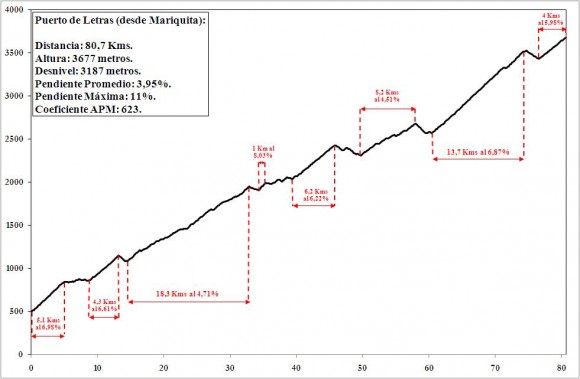
Alto de Letras is an extremely long climb and if you’re thinking of trying it, it helps to split it into three main segments. The first 30km segment is hard, but you are fresh and there’s enough oxygen at that altitude that it doesn’t feel harder than it should. The second 30km segment is a little easier but by that point the fatigue is starting to set in. The final 20km segment is the hardest.
Starting at the 59km mark, this final segment sees you riding at over 3,000 metres of altitude. At this height the air is noticeably thinner and the lack of oxygen means you have to word even harder to turn the pedals over. As with any climb, the harder you ride it, the more difficult it becomes. This is especially true when you’re riding at high altitude.
There’s no doubt this is a very challenging climb but, in my opinion, if you’re fit, it’s manageable. It’s just important to find a steady, comfortable rhythm. And in spite of this climb apparently having the biggest elevation gain of any cycling climb on Earth, I don’t think this is the hardest climb I’ve ever done. That honour is reserved for the infamous Mt. Baw Baw.
Obviously Baw Baw is nowhere near as long as Alto de Letras, nor does it have the same altitude gain, but it’s steep enough to kill your legs while providing no real chance to catch your breath in the final 6km of climbing.
I reckon every cyclist in the world should have a go at Alto de Letras. I know I’ll be back!
Have you got a climbing-related cycling story you’d like to share? Maybe you just rode your first mountain on the weekend? Or maybe you’re on holidays in the French Alps, climbing every col in sight. Either way, we’re keen to hear from you. Please get in touch with Matt via email.
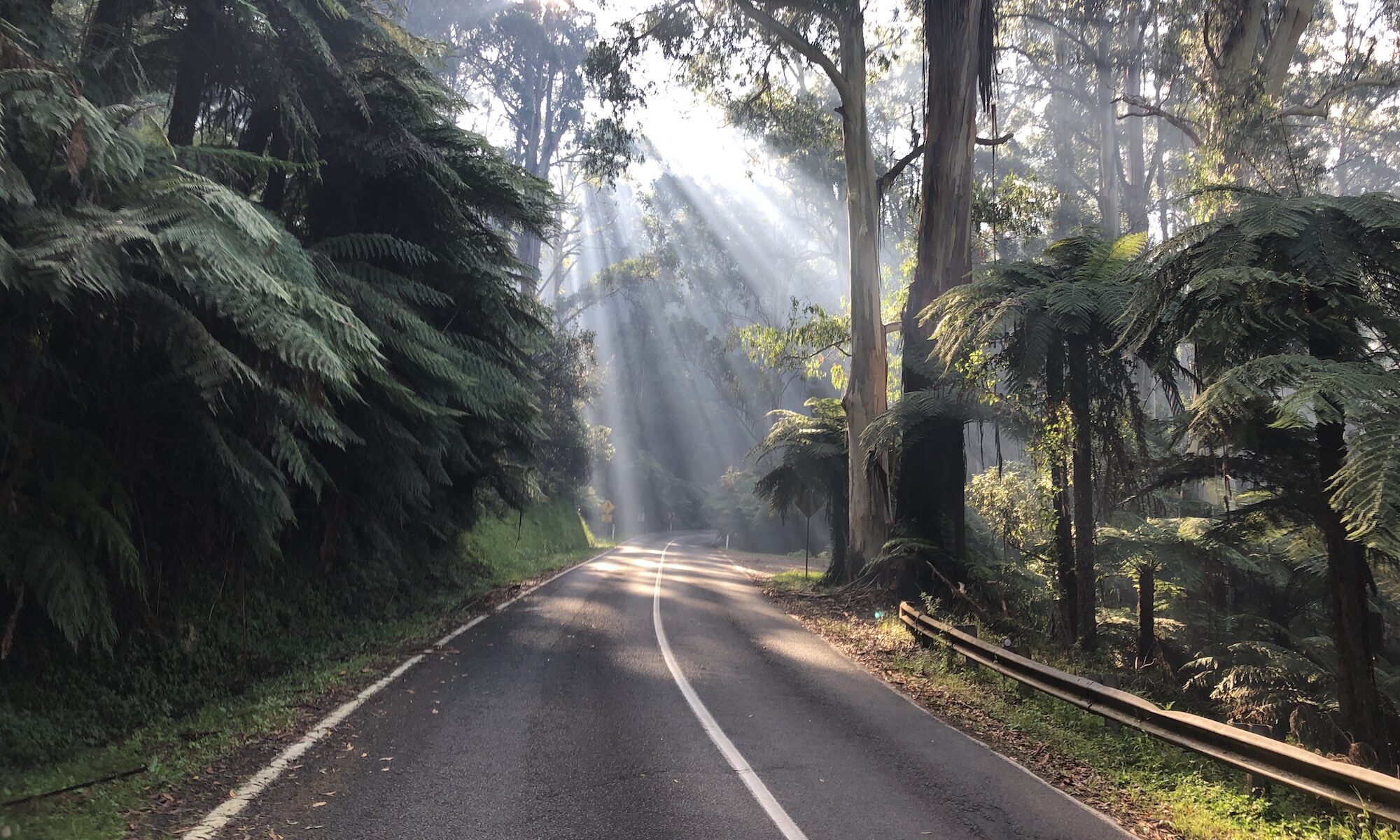
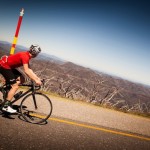

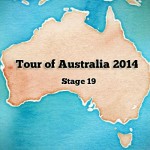
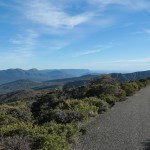
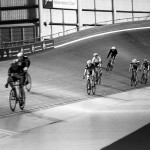
Anybody know a good shops to rent racing bikes for the climb? Preferably in Mariquita…? Or do we have to take them in Medellin and rent a car? Any tips welcome!
Rent bikes in Colombia is not very pleasant. I know that you can rent bikes in the larger cities like Medellin or Bogota (for like 50$ a day + half of the bikes value cash deposit), but I very much doubt that you can find a decent bike to rent in Mariquita
As a sprinter…
Nope, nope, nope, nope!
We found a larger climb. Pico Aguila. Starts in Valera, Venezuela. Road to Merida. Starts at 500 meter and ends at 4167 meter. In 84 km. I can send Garmin data if you like.
I remember reading somewhere that the ascent from Mariquita has only ever been used in one Vuelta. It is just too much. From what I can find online, it seems that the ascent from Manizales – about 50km shorter – is what features most years. Does anyone know definitively?
Ouch
I climbed Letras in February of this year. No doubt, it was one of the best climbs of my life. 5+ hours of pure bliss.
I blogged it here:
http://switchbackpublications.blogspot.com/2012/02/letras-3704.html
(I also rode with Alejandro in Auckland in late-March once I got back to NZ).
Duncan.
Oh wow. Amazing photos Duncan. Thanks so much for your comment and for the link. I’m sure many others will be keen to check out your pics!
I’m going to go back and read more of your blog. It looks like you’ve done some amazing rides around the planet. I’m so jealous. 🙁
I almost did this climb whilst on holidays in Maui a couple of years ago, but couldn’t get a hire car to get me to the start.
http://www.cycletothesun.net/
60 odd kms of continuous climbing.
Hi Matt
Nice work, getting this story up.It’s good to hear about climbs in slightly different parts of the world than we are accustomed to.As somebody who lives in N.E. Victoria we’re spoilt with some nice bergs in our area.
How are the ITB’s these days?
Did the bike fit help?
Thanks Tony – the story is a cracker eh?! ITBs appear to be on the mend – they’re definitely not as sore as they used to be and I guess to strengthening exercises must be working. Bike fit seemed to help, yep, but I think the stretches are doing more!
I don’t know if having multiple descents of up to 3km qualifies it as one climb. More like multiple climbs put end to end rather than one continuous one. Still looks like fun.
This one also looks like fun:
http://app.strava.com/segments/638944
Hmm, an interesting point. I wonder what the percentage of the 80km is spent on descending (could work it out from the profile I guess)? And how would that percentage compare to, say, Mt. Hotham with its descents? Sure, Hotham’s descents are shorter, but the climb is also shorter. Would be interesting to crunch the stats.
And while we’re on the subject of the subjectivity of climbs, what are you thoughts about Falls Creek (Mt. Beauty side)? A lot of people take the start to be Mt. Beauty, but there’s quite a bit of descending in there. That’s my reasoning, and that’s why I’ve designated the start as Bogong. But what, then, about Omeo to Dinner Plain? It’s probably a climb in the sense that most of the time is spent climbing but there are also a couple of significant downhills along the way.
I reckon it’s a tricky one! Thoughts?
From my experience in doing the Alpine Classic, I reckon that Falls Creek should be classified as starting at Mt Beauty and given Category 1…
With climbs that have bursts of flat/descending I think as long as generally you are climbing, then you can stretch back as far as you like as long as it is sensible to do so…
If you look at the profile, those descents are fairly insignificant compared to the rest of it. I think it classifies as one climb.
I agree Dan.
Bucket list, for sure.
This post is all kinds of awesome. Absolutely amazing.
As for long climbs in Australia, Lake Mountain from Reefton is about 40km. Mt Hotham from Omeo is around the 50km mark, but they don’t have the sting that this one has…